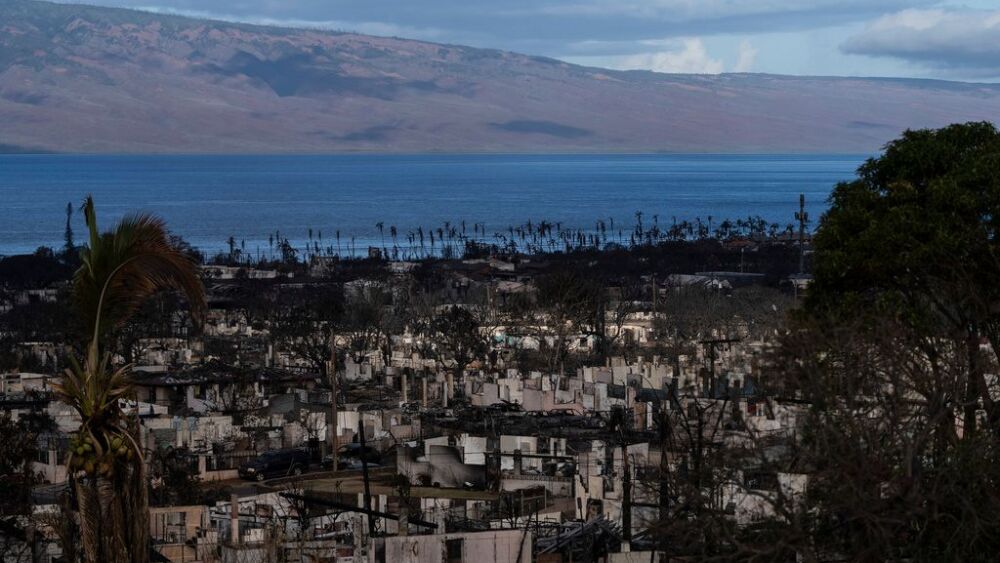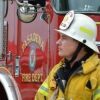On Aug. 8, we all watched in shock and horror as a deadly fire ripped through the town of Lahaina on the Hawaiian island of Maui.
As the death toll continues to climb, and photos and videos of the devastation dominate our news feeds, it’s vital that we take a moment to determine what lessons can be learned from this tragedy, even in these initial stages of response and reflection.
Maui in focus
The Island of Maui comprises approximately 720 square miles, with 10 fire stations to serve the entire island. That’s approximately one fire station for every 70 square miles. In comparison, the City of Glendale, California, is approximately 30 square miles and houses nine fire stations. Also, Maui’s geography is such that much of its interior is dominated by Haleakala (an extinct volcano) in the southeast and a huge forest preserve in the northwest.
Because most of the population of Maui lives in the large figure-8 outlining these mostly uninhabited sections of the island, response times are often extended. Under normal conditions, your second- or third-in engine/resource could take 10, 30 or even 60 minutes to arrive. And in the case of this emergency, the roads leading to Lahaina were littered with fallen trees, downed power lines, and traffic congestion from fleeing residents, delaying a normal response.
Response challenges
On Aug. 7, authorities issued a red flag warning for high winds, driven by the nearby Hurricane Dora. On Aug. 8, the fire ignited, sweeping through the town. The cause of the fire is still under investigation.
Some of the many challenges facing firefighters: 60 to 80 mph winds, power outages, cell phones down, poor access and egress, and mutual-aid crews needing to be ferried from other islands. Clearly, the odds were certainly stacked against the Maui County Fire Department, as its personnel were outgunned by wind, flames with a rapid rate of spread chewing through thick dry vegetation, spot fires, limited resources and poor communication.
Though Maui has 80 siren towers around the island to alert residents to hurricanes, tsunamis and other natural disasters, state and local officials did not activate them. This was confirmed by Adam Weintraub, spokesperson for the Hawaii Emergency Management Agency, in a statement made to NPR. However, other layers of the emergency warning system that were activated included cell phone alerts and messages on TV and radio stations, as confirmed by Maui residents.
This was a high-risk/low frequency event. They don’t happen often, but when they do occur, both residents and public safety agencies alike are easily overwhelmed.
People ask: Why weren’t aircraft used to fight the blaze? Firefighting aircraft are not as abundant on the islands compared to the mainland, particularly as Hawaii does not often see these types of wind-driven fire events. Additionally, aircraft are generally grounded when winds reach over 40 mph. The winds on Aug. 8 were reportedly as strong as 60-80 mph, meaning aircraft could not be utilized.
I want to send kudos to the Los Angeles County Fire Department, which sent two K9 teams from its Urban Search and Rescue Division to Maui. These K9s can do the work of 50 first responders. The dogs can discern scents unnoticeable by humans, and they can do it while jumping, crawling and running across a debris pile. Additionally, CAL FIRE Incident Management Team 1 as well as other agencies have been deployed to assist in the recovery efforts. More resources may be deployed as well.
What’s next for Maui?
Crews will continue to search for victims as they begin identifying those already found. As more time passes, the work will turn from rescue to recovery. But as a nation, we are strong, and we are resilient. The people of Maui are no exception. It will take time, but locals will rebuild and rebound. There will also be a big need for mental health support for both the victims and first responders.
Key takeaway
Be prepared. We are stepping into the height of fire season. Here in California, the Santa Ana winds are just around the corner. This type of incident can be on our doorstep before you know it. When it comes to disasters, we need to prepare as much as possible. This includes all calamities, natural and man-made. There are no guarantees our planning and preparation will work against Mother Nature’s forces.
I’m sure we will be learning more details regarding the incident over the next days, weeks and months. We all know the saying, “Train as if your life depends on it – because it does.” Such a fitting statement for this unprecedented event.
Stay safe and pray for Maui!
Read more about the Maui fires
- ‘Unprecedented': People flee to ocean to escape Hawaii wildfire
- ‘Absolute devastation’: Fire service leaders, officials react to Hawaii wildfires
- Number of dead from Maui wildfire reaches 99
- Official defends not using warning sirens during devastating Hawaii wildfire
- Maui emergency management chief resigns over siren criticism
- ‘All our houses were burned down to ashes': FFs among those who lost homes in Hawaii wildfire













